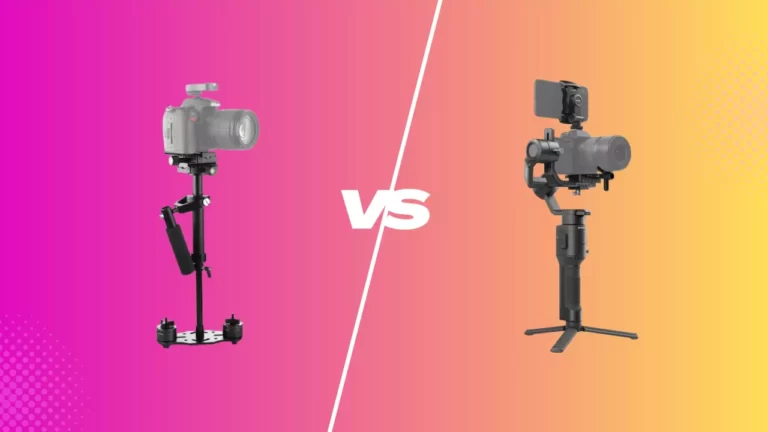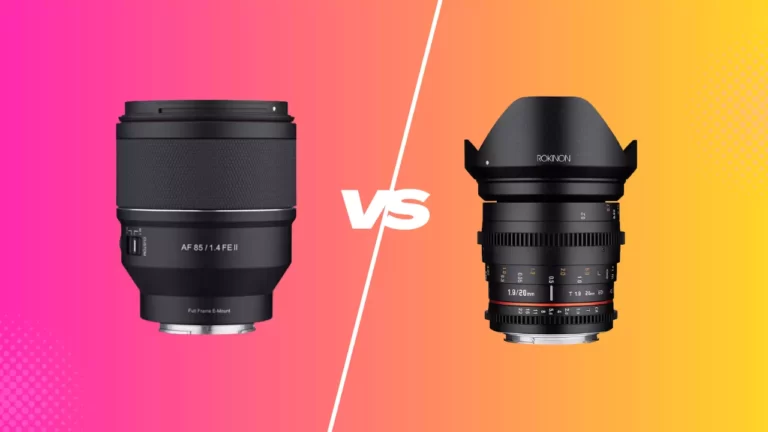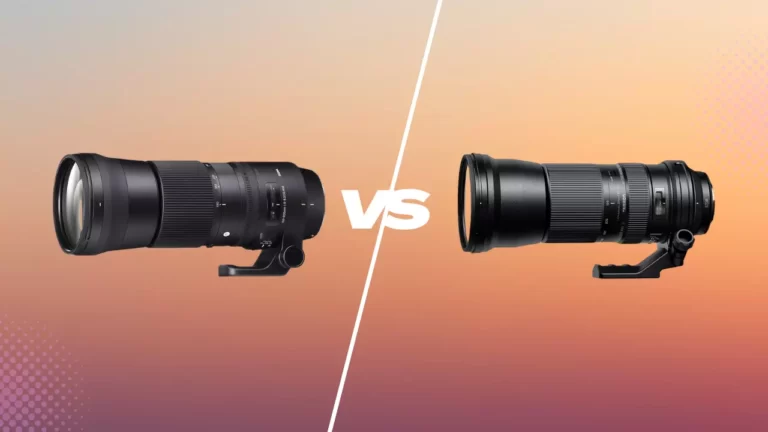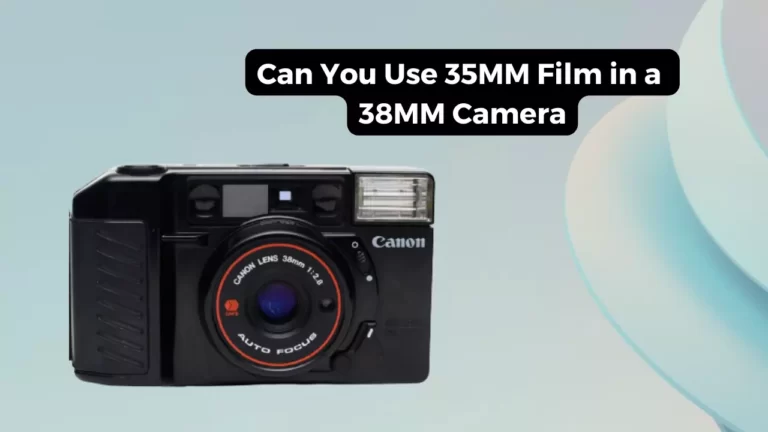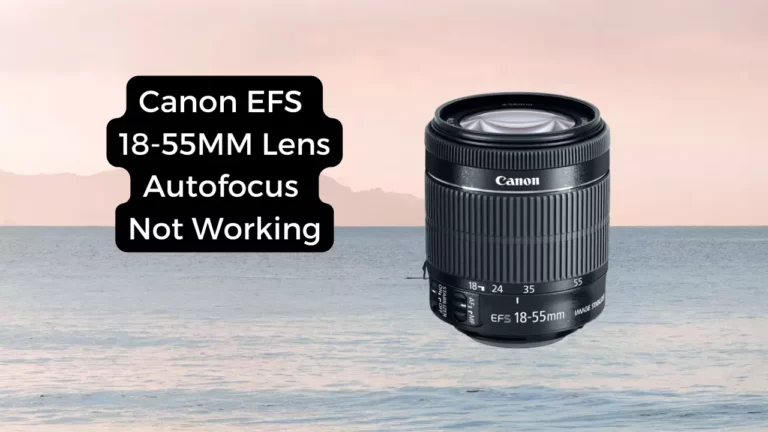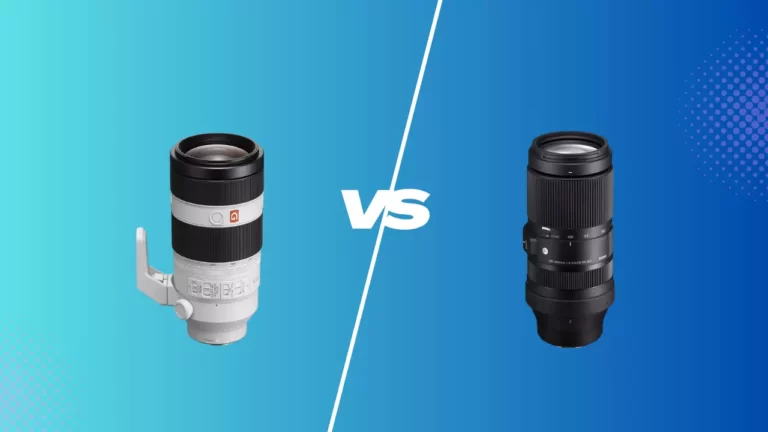Gimbal vs Glidecam – Which is the Better Stabilizer for You?
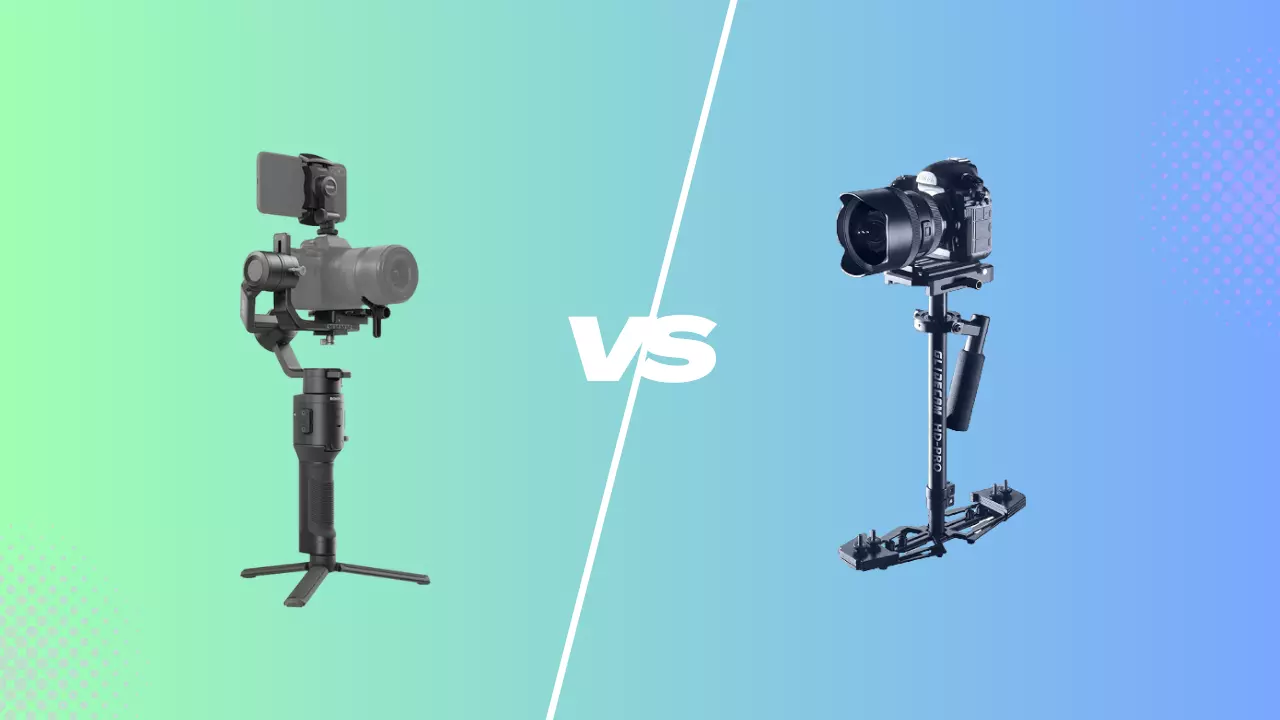
Even though most of the recent DSLRs and mirrorless hybrid cameras come with good image stabilization features, there is only so much they can do. To get really smooth shots with a lot of motion, you will need an external way of stabilization. But which stabilizer is the best? In this vein, one major debate is often between Gimbal and Glidecam stabilizers.
Glidecam and gimbal stabilizers are inherently similar. The main difference lies in the mode of performance. Gimbal makes use of electronic parts and battery power to work, while glidecam is a more manual hands-on performance. Also, the Gimbal stabilizer can be programmed to allow more functions. However, the electronic parts and motors make it at risk of damage, hence is not as durable as Glidecam.
This article compares the two stabilizers in a detailed way to give you a broader insight on the same.
Gimbal vs Glidecam
Are you enthusiastic about camera stabilization techniques? Then you must understand the importance of taking smooth photos and footage. Below are two popular contenders; Glidecam and Gimbal stabilizers.
Gimbal Stabilizer Overview
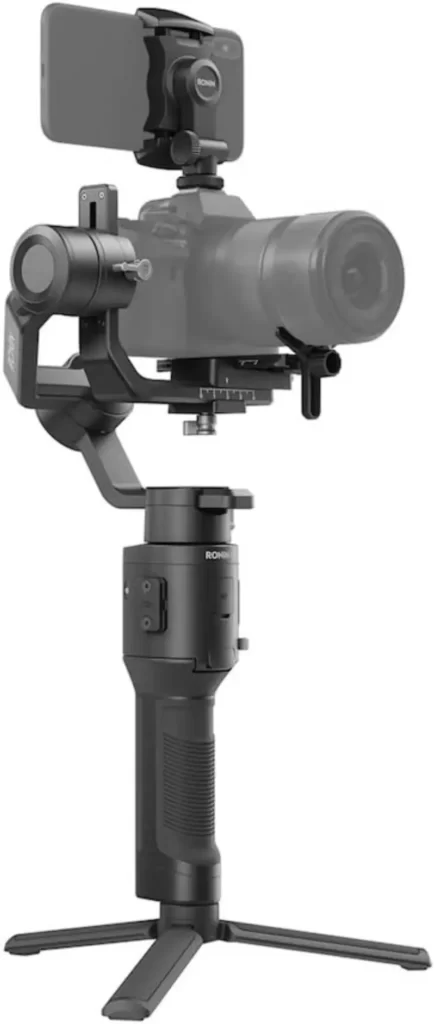
Gimbals are a type of motorized stabilizers that require a battery and can be programmed to perform much more functions. But don’t be too quick to settle on these stabilizers. There’s a lot more to be considered.
Gimbals utilize motors that are paired with small arms and this way, they can stabilize your camera. The camera is placed on a small plate that balances it. Whenever you move around the motors, ensure that the camera is balanced and free from shakes.
Gimbals are available in an array of shapes and sizes—from the lightweight setup for your Smartphone to the bigger rigs for cinema cameras. They are also available for camera drones to stabilize video footage and shots taken in the air.
Pros
- Easy to get started with good results
- There are programmable modes e.g. for hyper lapses and time lapses
- It can often be remotely controlled
- It is not as susceptible to windy conditions
Cons
- It needs a power source
- It results in mechanical-looking movements
- There is a risk of overloading the motors from the bad balancing of your camera
Glidecam Stabilizer Overview
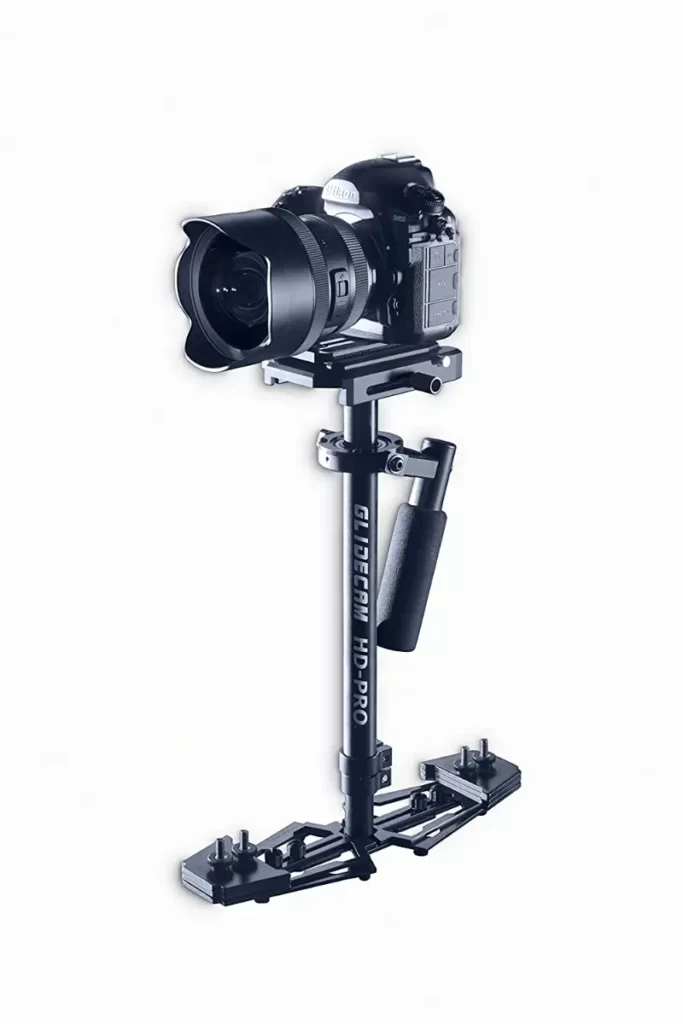
Glidecam brand is known for its camera stabilizers that balance cameras with weights and do not have any electronics. Glidecam employs counterweights that work to balance the camera on a short pole around a center axis.
The weight of the camera and lens combination will determine the number of weights to be added at the bottom to ensure stability. Moreover, you can adjust the length of the center pole with respect to the handle to keep the camera still during movement.
Glidecams do not have any electronic features or parts and entirely rely on gravity and the user’s movement for smooth shots. Hence, it may take some practice before you know how to use it optimally.
Pros
- It does not run out of battery as it does not have any electronic motors.
- There is no risk of damaged engines
- The hands-on control allows for faster tilts, twists, and pans
Cons
- It takes a lot of practice to get right
- It can swing from side to side, especially in windy conditions
- There are no programmable features
Features compared
There are many useful features for the Glidecam and Gimbal. We have compared them below.
Design
The glide cam stabilizer is mainly designed with metallic parts and counterweight to facilitate manual control and balancing of the cameras. There are no electronic parts or battery components. Meanwhile, the Gimbal stabilizer consists of lighter metallic parts as well as electronic components. It also uses battery power.
Camera setup and balance
The glide cam stabilizer is capable of holding almost all big-sized DLSRs or mirrorless cameras in its metallic baseplate. It is able to achieve balance by manual adjustment of fixing the screws. Gimbals pose some limitations when it comes to the cameras it can hold. It can only take up a certain weight that is much lesser than the glide cam.
Durability
The glide cam stabilizer is more durable thanks to its rigid and weatherproof build. It is not susceptible to damage from dust, water, or adverse weather conditions. On the other hand, Gimbal is delicate because of its electronic parts. It is thus not suitable for use in harsh environments.
FAQs
How to use glidecam stabilizer for best results?
To use the glide cam stabilizer for best results, you have to hold the handle with one hand and use the other to gently adjust the angle and position of the center pole. This makes a great and reliable way of controlling as it allows you a direct hands-on feeling with the stabilizer. In turn, this allows for fast pans and tilts. Whenever you are using this stabilizer, ensure that you work with your legs bent and minimize bouncing up and down.
What are the different types of Gimbals?
Gimbals are often either on the 2-axis or 3-axis. The 2-axis gimbal gives you control over tilting (movement up and down) and rolling (moving the handle horizontally). The 3-axis allows you to control the pan (side-to-side movement).
How to use a gimbal stabilizer for the best results?
The gimbal stabilizer can be controlled using a small joystick on the gimbal handle. You can also program it via an app on your phone. Since it is controlled this way, this stabilizer tends to produce a more mechanical movement. You also need to end your knees when moving so that the footage does not bob up and down.
Conclusion
When it comes to the gimbal vs glide cam debate, there is really no right answer. The type of stabilizer you will ultimately need will depend on the type of footage you intend to capture, where you will use it, and for how long. Otherwise, they are both great stabilizers that you can completely rely on for stabilized and smooth shots.
You Can Also Read:
- Canon R5 Mark ii (Release Date, Price & Specs) - December 20, 2023
- Sony 100 400 vs 200 600: Which Telephoto Lens is Right? - December 15, 2023
- Sony A1 II Camera (Release Date, Price & Specs) - November 30, 2023

